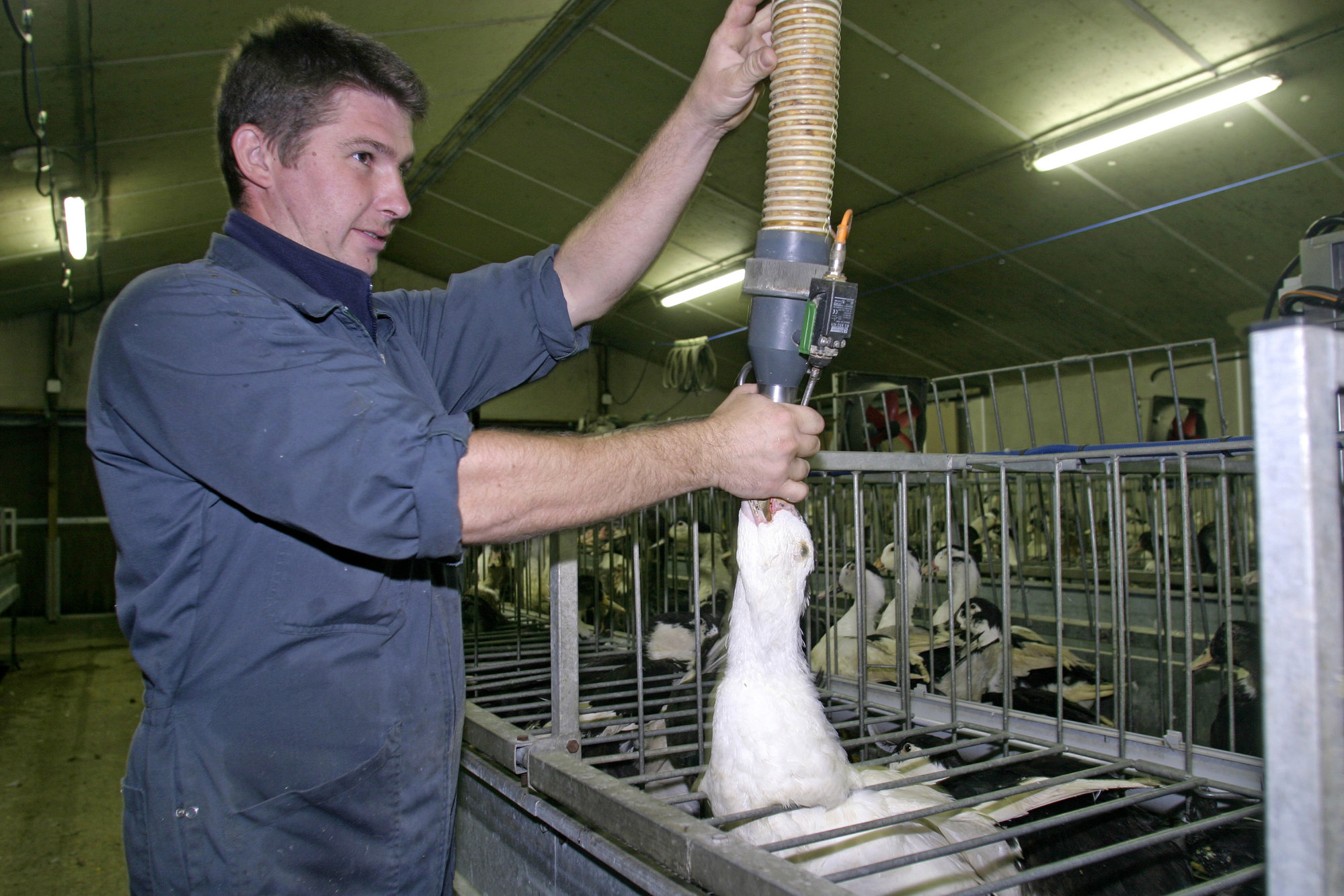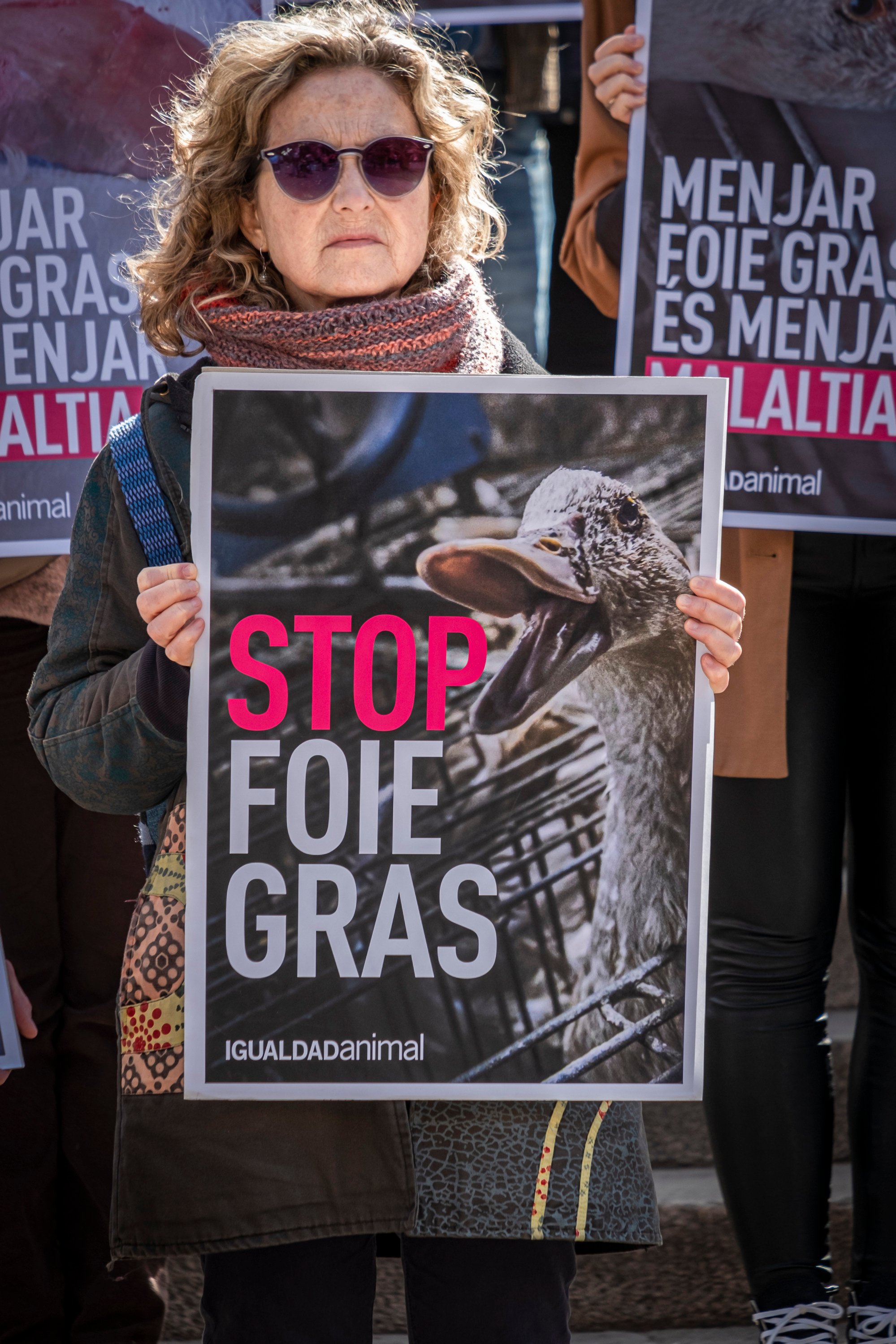
The idea of the delicacy foie gras either inspires rapture or rebellion.
The former prompts festivals, such as in Sarlat, the capital of the Black Périgord region of France, where Périgord foie gras is protected by two quality schemes, the Protected Geographical Indication label and “Origine Certifié Périgord”. In Sarlat, foie gras is celebrated during the first weekend in March, at Fest’Oie (“goose festival”).
While foie gras is officially classified as part of the cultural and gastronomic heritage of France, in other parts of the world, its production is banned. In addition, a World Day Against Foie Gras – November 25 – has been proposed to take a stand against such a product.
This is because the production of foie gras is viewed as inhumane. Foie means “liver”, and gras is “fat” (just as in the festival Mardi Gras, which means “Fat Tuesday”) – the fattening of the liver of a duck or goose is accomplished by gavage.

A farmer force-feeds grain to a duck as part of the process to fatten its liver for foie gras, in France, in 2005. Photo: Getty Images
The term gavage entered the English language in the late 19th century, borrowed from the French gavage, from the verb gaver, meaning “to stuff, cram”, from the dialectal Old French gave for “throat”. Such force feeding, by means of a tube inserted down one’s throat, is usually used for poultry bound for market.
Foie gras – clipped from the phrase pâté de foie gras, “pie of fat liver”, with foie gras originally served in a pastry (as it still is in Alsace) – entered English in the early 19th century.
The practice of goose fattening actually began centuries earlier, in ancient Egypt, and spread to the Mediterranean. It is in the Roman period that the liver from such fattened geese is mentioned as a distinct food, and the means of achieving the desired enlarged livers was through cramming the geese with dried figs, as described by Pliny the Elder in the 1st century AD.
Such fattened liver was thus in Latin iecur fīcātum, “fig-stuffed liver”: iecur being “liver” and ficātum deriving from ficus, “fig”. The component ficātum subsequently became associated with such animal liver (as food) in Late Latin, and then evolved to become the root word for “liver” in the Romance languages, such as fegato in Italian, hígado in Spanish, and, of course, foie in French.
Fast forward to the current reaction against this food, which has not only produced vegan alternatives but also innovative names.

An animal activist attends an anti-foie gras demonstration in Barcelona, Spain, in 2020. Photo: Getty Images
Paris-based chef Fabien Borgel launched a plant-based substitute called faux gras – faux meaning “false” – while Madrid-based start-up Hello Plant Food has produced Fuah! – the expression, based on an abbreviation, used to express contempt or anger.
News Related